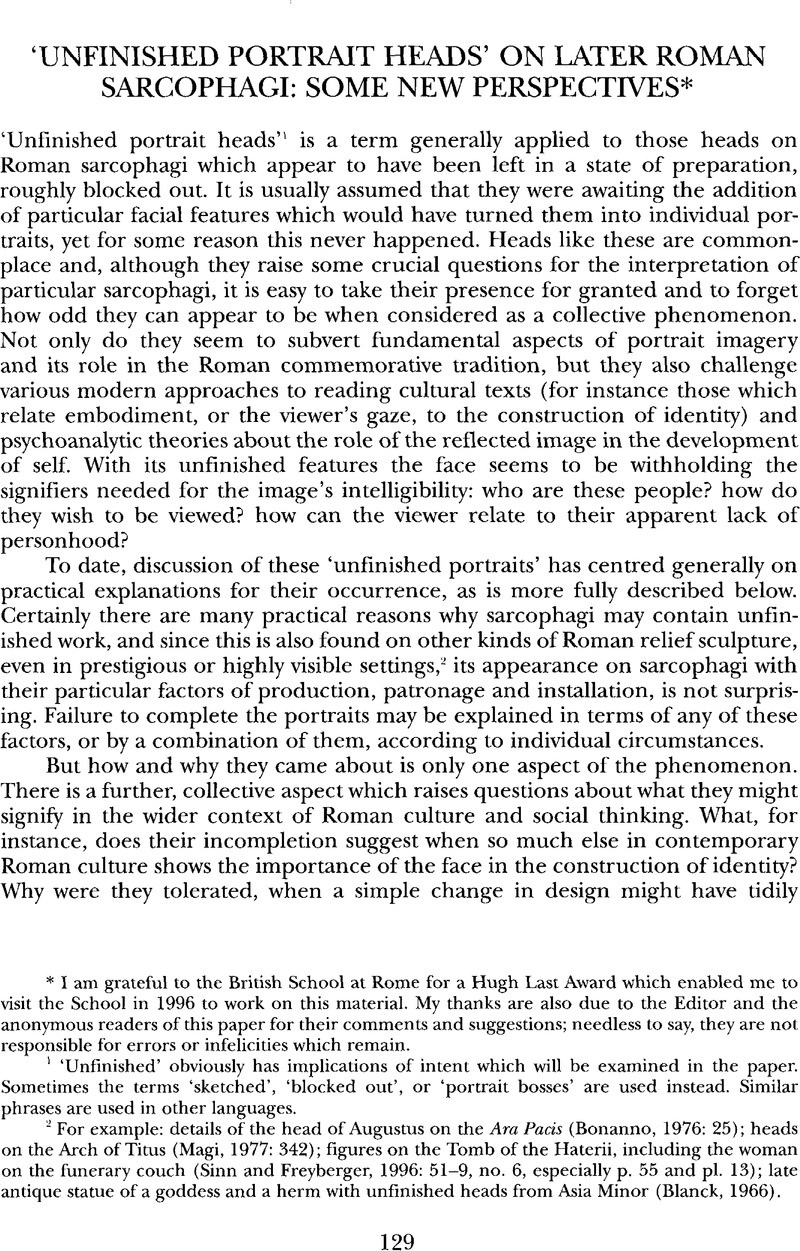Article contents
‘Unfinished portrait heads’ on later Roman sarcophagi: some new perspectives*
Published online by Cambridge University Press: 09 August 2013
Abstract

- Type
- Articles
- Information
- Copyright
- Copyright © British School at Rome 1998
Footnotes
I am grateful to the British School at Rome for a Hugh Last Award which enabled me to visit the School in 1996 to work on this material. My thanks are also due to the Editor and the anonymous readers of this paper for their comments and suggestions; needless to say, they are not responsible for errors or infelicities which remain.
References
- 3
- Cited by




